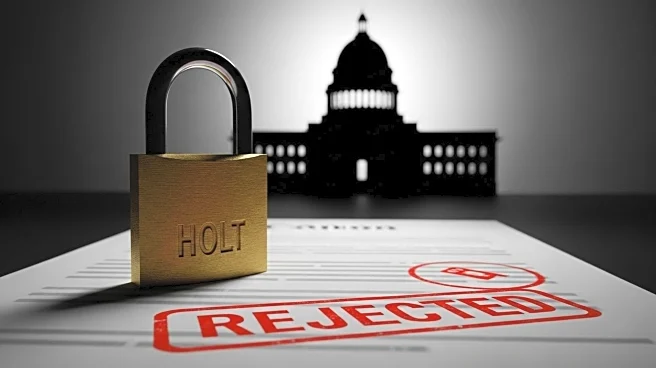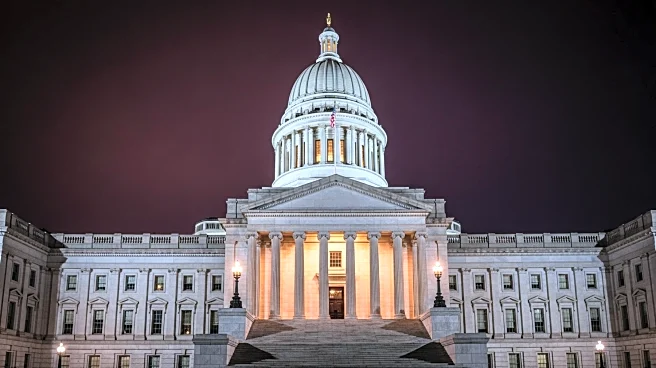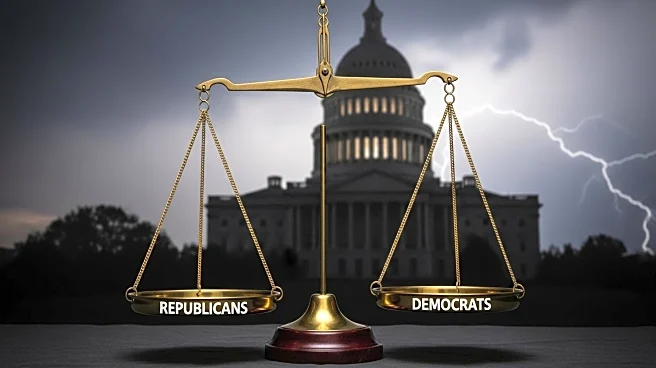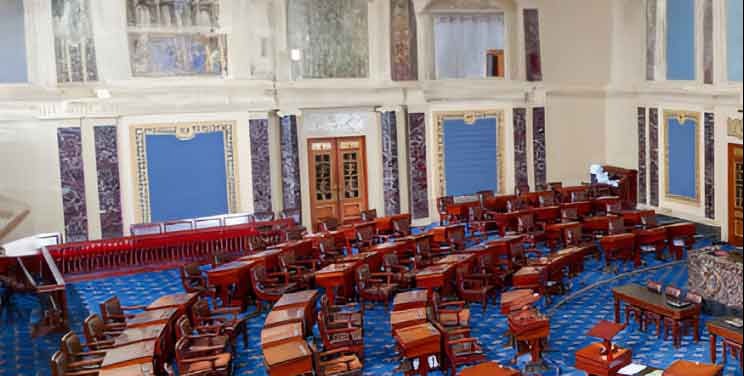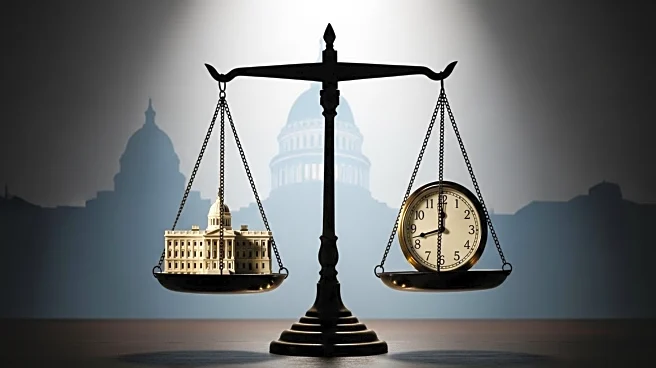What is the story about?
What's Happening?
The U.S. government has entered a shutdown after Congress failed to pass a stopgap funding measure by the September 30 deadline. This marks the first shutdown in nearly seven years. The impasse is primarily due to disagreements over healthcare funding, with Democrats demanding extensions of ACA subsidies and Medicaid protections, while Republicans pushed for a clean short-term funding bill. As a result, non-essential federal agencies have halted operations, leading to furloughs and unpaid work for hundreds of thousands of civil servants. Essential services like national security and air traffic control continue, albeit without pay. The shutdown has also delayed key economic data releases, including the Bureau of Labor Statistics' jobs report, impacting the Federal Reserve's ability to assess growth and inflation.
Why It's Important?
The shutdown has significant implications for the U.S. economy and public services. Economists warn that each week of shutdown could reduce quarterly GDP by approximately 0.1 percentage points, equating to a $7 billion loss. Consumer confidence, already fragile, may further deteriorate, potentially leading to broader economic challenges. The absence of critical economic data complicates the Federal Reserve's decision-making process, as it relies on such data to guide monetary policy. Politically, the shutdown has intensified partisan blame, with Democrats accusing Republicans of risking healthcare access, while Republicans blame Democrats for the impasse. The shutdown's resolution will likely depend on public opinion and political negotiations.
What's Next?
The shutdown's duration remains uncertain, with both parties entrenched in their positions. Senate Republicans plan to hold votes in an attempt to garner Democratic support for a funding bill. If no agreement is reached, the shutdown could extend into October, further delaying economic data and increasing uncertainty in global markets. Pressure will mount on lawmakers to negotiate a resolution, especially with upcoming midterm elections. The shutdown's impact on federal employees and public services will continue until a funding agreement is reached.
Beyond the Headlines
The shutdown highlights deeper issues in U.S. political dynamics, including the use of government funding as leverage in policy disputes. The partisan divide over healthcare funding reflects broader ideological differences that have persisted in American politics. The shutdown also underscores the vulnerability of federal employees and public services to political stalemates, raising ethical questions about the use of essential services as bargaining chips. Long-term, the shutdown may influence voter sentiment and impact future legislative negotiations.
AI Generated Content
Do you find this article useful?
